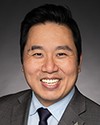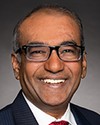That is an excellent question. When I started my mandate as president of the organization in 2013, we were on the edge of getting a new strategic plan. I've been working for 20 years at IDRC. I indicated to the senior management team that it was time to refresh our vision of the future as well as to integrate the best in terms of deliverology and monitoring ourselves against expectations.
For the strategic plan, this is not a glossy brochure. This is not a pamphlet. This is a strategic plan that was approved by the board. It is simple. It is crisp. It is clear. It's for people to be in their office and to know why they are coming to IDRC to work. They all know why. They have this soft spot. They want to make a change in the world. With this document, you can ask almost any employee at IDRC about the strategic objective. The employee knows it's about impact, it's about leadership, and it's about partnership.
How do you translate this? That was in the making as the special examination took place between August 2015 and March 2016. We had just rolled out our strategic plan in April. We were developing the implementation plan for each team with the indicator that fit with the work that they have to conduct and with the strategic objective. Now if you go to the IDRC implementation plan for each of our programming teams, whether it's on agriculture; climate change; maternal, newborn, and child health; reproductive health; economic growth; science, technology, engineering, and mathematics, all of these teams have a quite elaborate set of indicators and targets.
The issue is discussed on at least a yearly basis with the board. In fact, it's discussed on an ongoing basis. We have an annual performance report that is tabled with our board and a report on the progress that we have made on our objectives.
I'll give you an example. On partnership, we have a target to leverage $450 million over the next five years. In the last five-year period, we were able to fundraise $352 million. It's quite ambitious because with the economic turnover, the change of governance and all of this, we need to be nimble and flexible. We need to be able to maintain this relationship with our favoured partners.
Over the first year of the strategic plan, we fundraised $47 million. You say, Jean, $450 million divided by five, that's $90 million a year. You're short on your target. Yes, we are. This is exactly why there is a target. It gives us the opportunity to say, okay, what are we going to be doing now in order to raise our...to pass these...with these partnerships. That then drives some operational decisions, and we might fail to meet the target but we will know why. I think that's why indicators, targets, and delivering results towards measurable impacts are important. I hope we won't fail.




